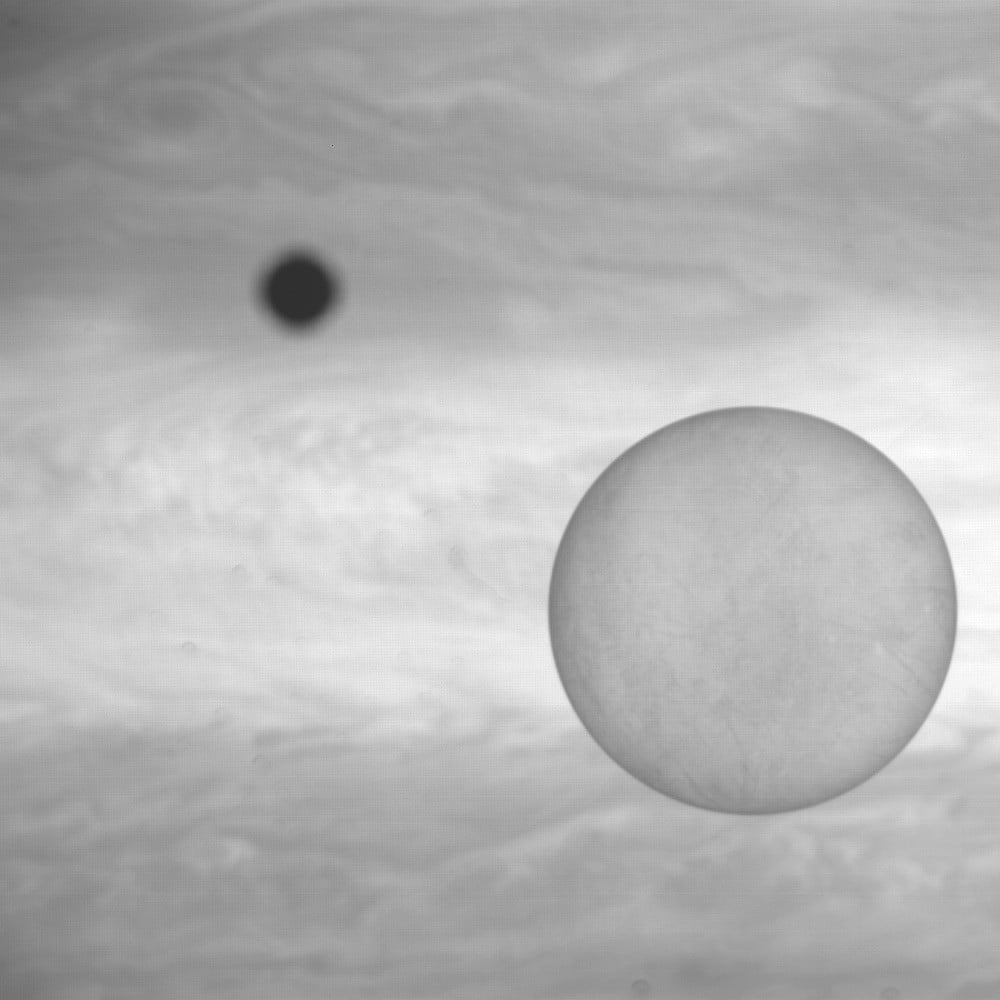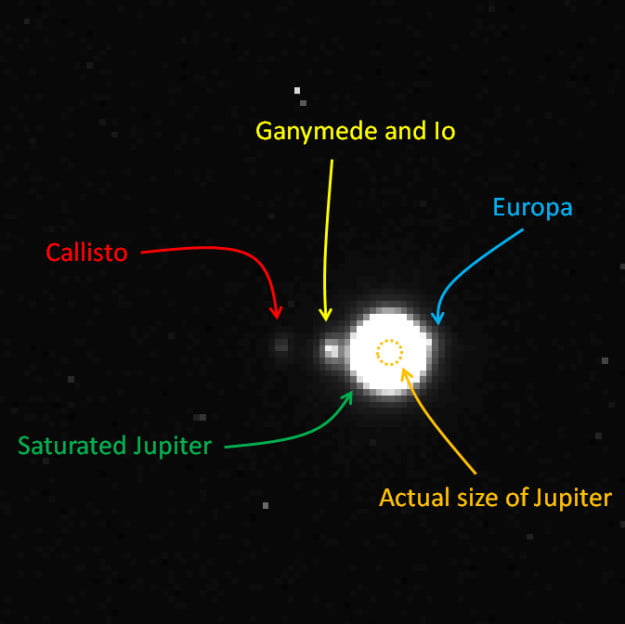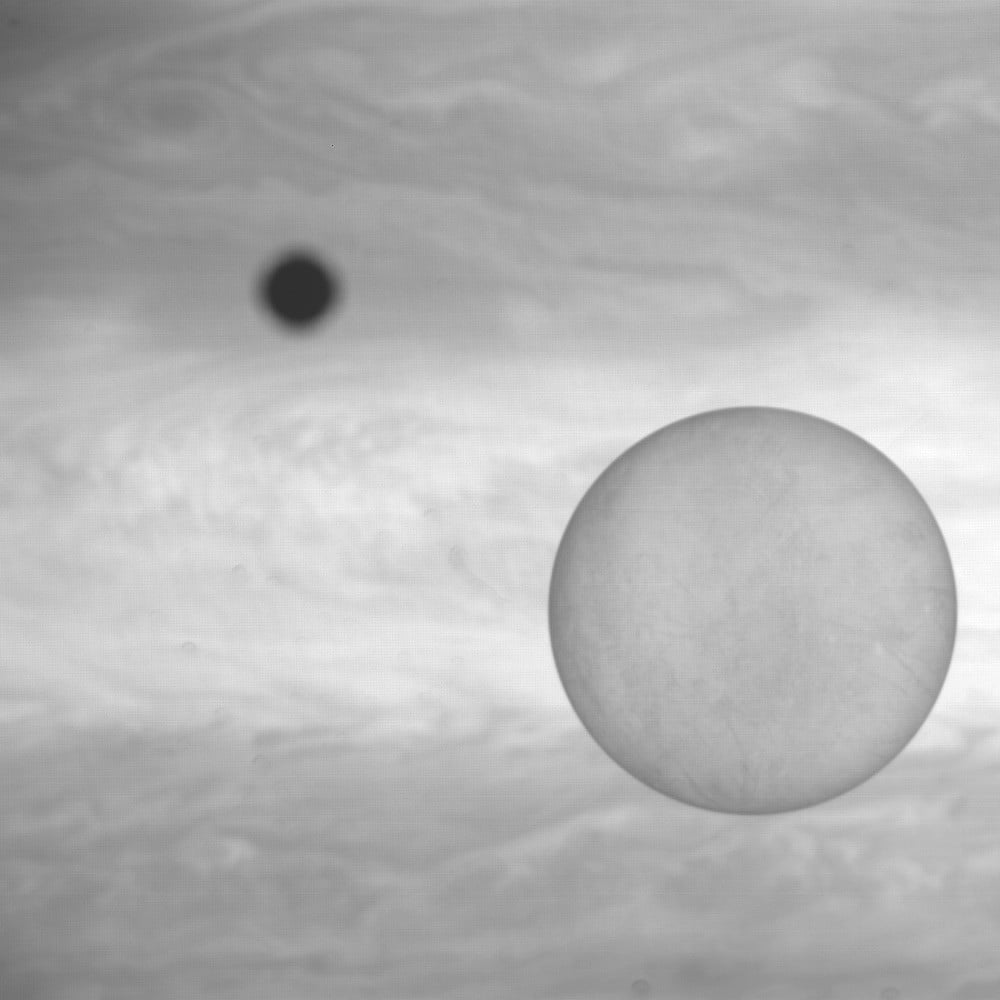

Jupiter has an abundance of moons, and astronomers continue to spot new ones and to make unexpected findings about the ones we’ve already seen. An upcoming mission from the European Space Agency, called the Jupiter Icy Moons Explorer, or JUICE, hasn’t even left Earth yet but has already imaged its target of the Jupiter system.
In the image above you can see the main glowing body of Jupiter, surrounded by some of its moons: Europa, Ganymede, Io, and Callisto. Jupiter appears larger than it really is due to the way the image is optimized, which brings out the details of the moons as much as possible.
“Unsurprisingly, some 640 million kilometers (nearly 400 million miles) away, the moons of Jupiter are seen only as a mere pixel or two,” Gregory Jonniaux, Vision-Based Navigation expert at Airbus Defense and Space, explained in a statement. “Jupiter itself appears saturated in the long exposure images needed to capture both the moons and background stars, but these images are useful to fine-tune our image processing software that will run autonomously onboard the spacecraft. It felt particularly meaningful to conduct our tests already on our destination!”
If you want a more detailed look at the targets, then ESA also released simulated images of what you can expect to see when JUICE gets up and personal with the moons. Using existing images of the moons Europa (left), Ganymede (middle), and Callisto (right), JUICE’s NavCam processed the data to create a simulation of what it should be able to capture once it arrives at Jupiter.

“The simulated views of the moons of Jupiter give a more realistic impression of what our NavCam will capture during flybys,” Daniele Gherardi, ESA Guidance, Navigation and Control expert, said in the same statement. “Of course, the high-resolution scientific camera suite will impress us with even more detail of these enigmatic moons.”
Another simulation built from existing images shows how the moons will be observed against Jupiter’s beautiful backdrop. This image shows Europa against the Jovian atmosphere, with the black disk representing the shadow that the moon would cast on the clouds below.

JUICE will launch in 2022 and will take seven years to reach the Jupiter system. Once it arrives it will not only take orbital tours around the planet but also perform a dedicated orbit around the moon of Ganymede.
- Jupiter’s recently discovered moons have been named by the public
- NASA confirms it’s heading to Europa in the 2020s to unlock its icy secrets
- Pass the salt please: Table salt found on Jupiter’s moon Europa
read more at https://www.digitaltrends.com by Georgina Torbet
Tech









